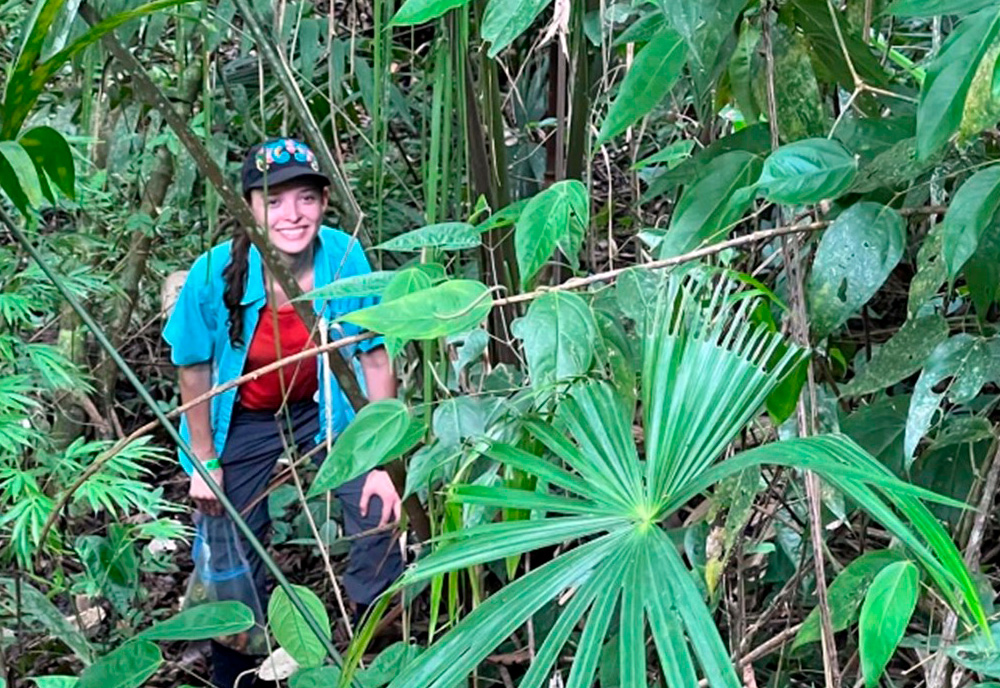By Anna Mayor, College of Arts and Sciences
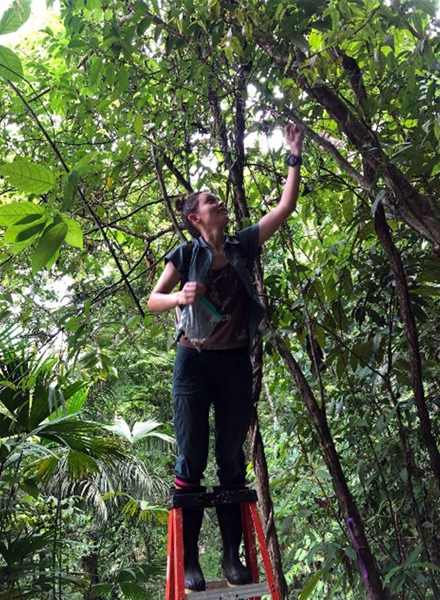
Quesada-Avila gathering fruit seeds for testing. (Photo courtesy of Quesada Avila)
Gabriela Quesada-Avila, a third-year doctoral student in the Department of Integrative Biology, turned to the warm forests of Panama to examine how temperature impacts seed sprouting
and gather more insight on how plant communities will respond to future climates.
Quesada-Avila, who is studying plant ecological responses to future climates and is
on track to graduate in 2027, specializes in seed and microbial responses to elevated
temperatures.
“I want to find answers about who the ‘winners and losers’ will be under a warmer
world,” she explained. “This information can help us select the most suited species
for future forest restoration or conservation efforts.”
Searching for seeds
Quesada-Avila worked under the guidance of her doctoral advisor Paul-Camilo Zalamea, an assistant professor in integrative biology and a research associate at the Smithsonian
Tropical Research Institute in Panama, to carry out the study in the Gamboa research lab, located at the edge of the Panama canal.
“The planet is getting warmer every day. Last year, climate scientists determined
that Earth’s average temperature increased to more than 1.5 °C above pre-industrial
levels for the first time and will continue to warm up,” she said. “Lowland tropical
rain forests are ecosystems that are already exposed to very high temperatures.”
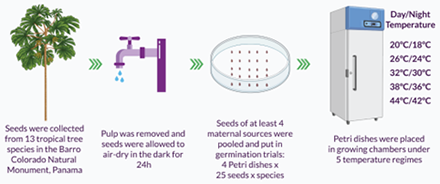
Illustration of seeds research process.
Quesada-Avila added that many different tree species are close to their thermal limits
for processes such as photosynthesis.
“We know very little about neotropical seed germination thermal thresholds. If temperature
keeps increasing as fast as it has been, many plants will not have enough time to
adapt to the new thermal conditions, threatening crucial ecosystem dynamics,” she
added. “If temperature continues to rise at the alarming rates observed, much of the
extant vegetation may not contain the evolutionary tools to persist, threatening crucial
ecosystem processes across the globe.”
She collected 15 species of seeds from available fruiting trees, walking miles in
the vast Barro Colorado Natural Monument forest — described as a “mecca for tropical
biologists” since this particular island forest provides access to Panama’s lowland
tropical forest.
Once she had found at least four different individuals of the same species with ripe fruits, she cleaned seeds from the fruit pulp and air-dried them in the dark for 24 hours.
After the seeds were cleaned, Quesada-Avila evaluated initial seed viability, using
a colorimetric test called tetrazolium (TZ), which measures seed embryo respiration.
“Seed viability is useful information because it allows me to determine whether the
seeds I collected have the potential to germinate,” she said.
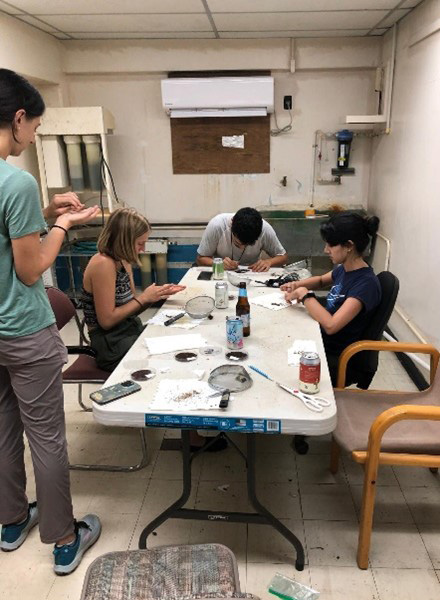
Quesada-Avila and colleagues cleaning collected seeds to prepare them for testing. (Photo courtesy of Quesada Avila)
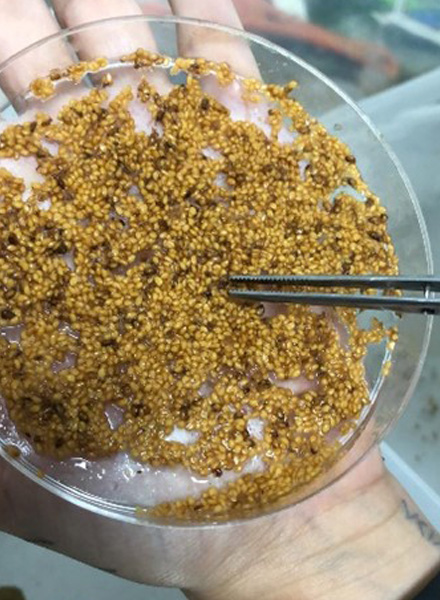
Seeds in a petri dish. (Photo courtesy of Quesada Avila)
Quesada-Avila was careful to also consider seed dormancy — the inactive metabolic state that inhibits the embryo from developing. She divided the plant species into two groups: dormant seed species and non-dormant seed species, or ‘quiescent species.’
Turning up the heat
Quesada-Avila used environmental chambers to characterize germination responses under five temperature regimes.
She simulated day and night by cycling the seed pools through 12 hours of light and
12 hours of darkness at a range of corresponding temperatures: 68/64.4°F, 78.8/75.2°F,
89.6/86°F, 100.4/96.8°F, and 111.2/107.6°F.
“Germination responses were scored on five temperature regimes every week for up to
six weeks. After that, I performed another seed viability test to confirm if the non-germinated
seeds were dead or dormant,” she said.
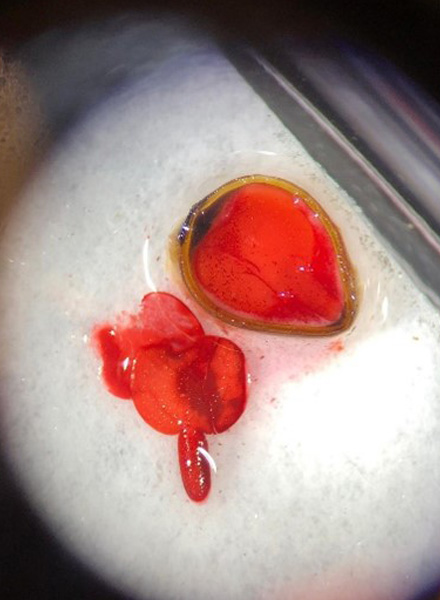
Seed embryo under the colorimetric test called tetrazolium (TZ) that measures seed embryo respiration. Red indicates that the seed is alive. (Photo courtesy of Quesada Avila)
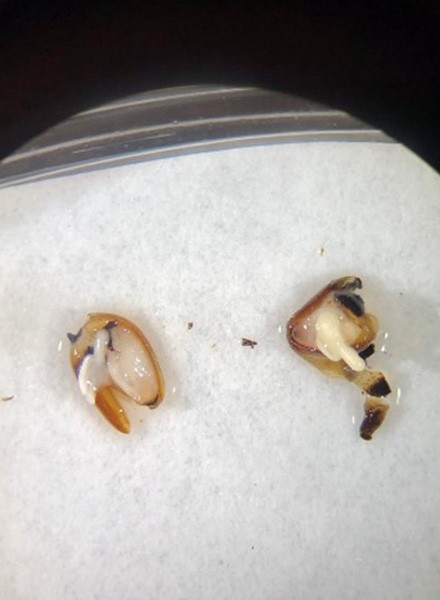
Seed embryo under the colorimetric test called tetrazolium (TZ) that measures seed embryo respiration. White means that the seed is dead. (Photo courtesy of Quesada Avila)
Finding the germination ‘sweet spots’
Quesada-Avila found that subjecting the seeds to daytime temperatures of 111.2 degrees
Fahrenheit and nighttime temperatures of 107.6 degrees Fahrenheit was a “death sentence.”
“There was no germination under this temperature for all of the 15 species,” she said.
Quesada-Avila also found that temperature effects on germination are seed dormancy-
and species-specific.
“This means that quiescent seeds or non-dormant seeds were able to equally germinate
under the other four temperatures,” she said. “But germination responses of dormant
seed species were not that easy to generalize because each of them responded very
differently.”
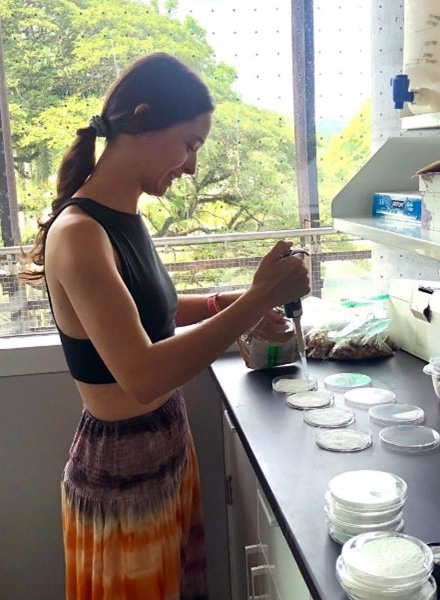
Quesada-Avila setting up the seed germination experiments in the lab. (Photo courtesy of Quesada Avila)
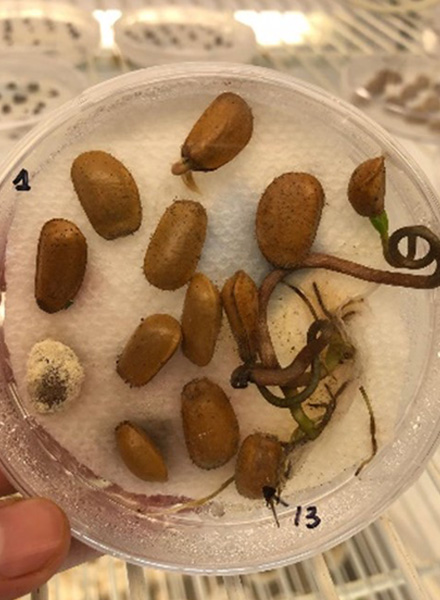
Germinated seeds. (Photo courtesy of Quesada Avila)
Some species showed a “stepped germination response,” meaning that as temperatures
increased, the number of seeds that germinated increased as well. Other species showed
very little germination under the colder temperatures.
Quesada-Avila found that all the species germinate faster when subjected to 89.6 degrees
Fahrenheit during the day and 86 degrees Fahrenheit at night, suggesting this range
as the “germination sweet spot” for this group of species.
She also found that, under the extreme temperatures — 64.4-68 degrees Fahrenheit and
96.8 -100.4 degrees Fahrenheit — germination was slower, suggesting that these temperatures
might be inhibiting the seed metabolic reactions.
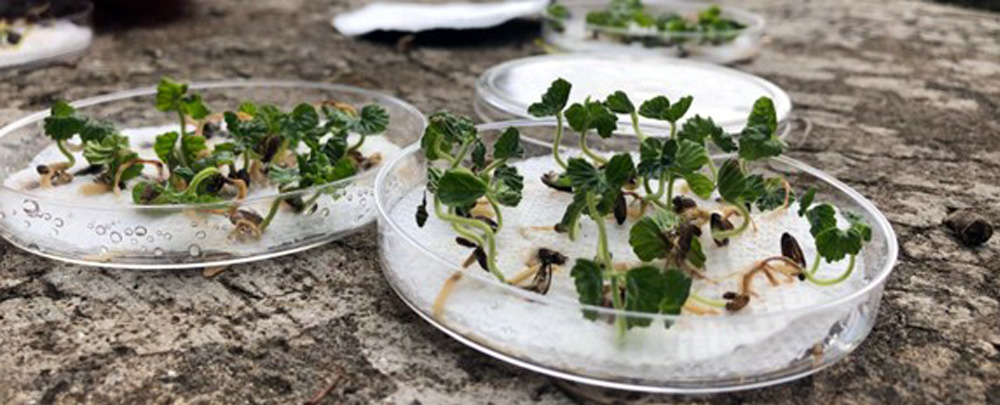
Final germination week - Cordia alliodora. (Photo courtesy of Quesada Avila)
Seeds that surprise
“I was surprised that two of the dormant-seed species were not dead after exposing
them to the highest temperature regime,” said Quesada-Avila, referring to the 107.7-111.2
degrees Fahrenheit regime.
One of those seeds was the Balsa tree, which is often used to build model aircrafts,
boat decks and thermal insulation panels.
“The seeds of this tree did not germinate but they were not dead either, and we think
they were still dormant. I was not expecting this after seeing the general trend that
all of the species die at this temperature. I started to wonder if dormancy is a trait
that could help trees ‘acclimate’ or ‘adapt’ to warmer temperatures,” she said.
Quesada-Avila said she hopes to see seed dormancy studied more in depth to have a
better understanding of how it can help seeds face stressful environmental conditions.
Taking it a step further
This summer, Quesada-Avila will return to Panama to work on a similar project, leveraging
a groundbreaking experiment, where scientists from the Smithsonian Institution and
the University of Leeds have warmed the soil with electric heaters at the Barro Colorado
Island in the Panama Canal.
“Using this setup, I will conduct a six-week seed burial experiment to examine the
response of seeds and seeds that interact with the surrounding soil microorganisms
to different temperatures. I will test if what I found in a lab-controlled setup holds
true in the forest soil,” she said.
She hopes to get more insight into how seed-fungal interactions are affected by elevated
temperatures.
Quesada-Avila, who earned her bachelor of science from a university in her home country
of Costa Rica, is also a member of the Ecological Society of America (ESA), which
organizes annual meetings and publishes several scientific journals, such as Ecology,
one of the most recognized journals in the field.
“Plants are the foundation of ecosystems, it is kind of a cliché to say it, but they
are the reason why we can breathe,” she said. “It is time to remember something the
marine biologist, writer and conservationist, Rachel Carson once said, ‘In nature,
nothing exists alone!’”
Learn more about the Department of Integrative Biology’s Plant and Microbial Ecology program.
